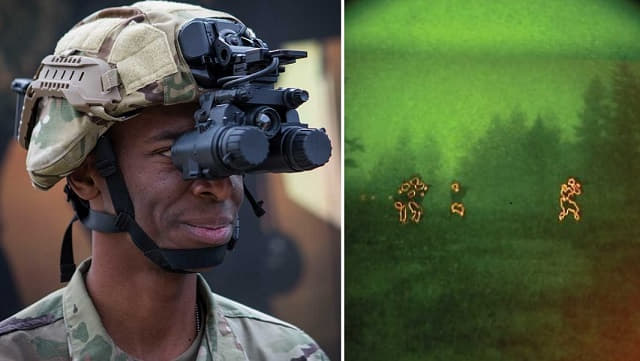When you hear the phrase “night vision“, the first thing that likely comes to mind is probably one of your favorite espionage or action flicks, in which a character dons a set of night-vision goggles in order to locate someone else in a pitch-black space on a moonless night. Additionally, you could have questioned, “Do those items actually work? Do you have real night vision?
Of course, “yes” is the correct response. A person standing more than 200 yards (183 m) distant may be seen with the right night-vision equipment on a cloudy, moonless night!
Depending on the technology employed, night vision can function in one of two very distinct ways.
Image enhancement – This technique gathers the minute amounts of light, such as the lower infrared spectrum, that are there but may be invisible to our eyes, and amplifies it so that we can clearly see the image.
By collecting the higher infrared spectrum of light, which is generated as heat by objects rather than merely reflected as light, thermal imaging technology works. Compared to colder items like trees or buildings, warmer objects like warm bodies release more of this light.
This is how thermal imaging functions:
All of the visible objects’ infrared light is focused via a unique lens. An array of infrared-detector components in a phased array scan the concentrated light. A thermogram is a very detailed temperature pattern that the detector components produce. The detector array can gather the temperature data needed to create the thermogram in less than one thirty-second. Several thousand sites inside the range of view of the detector array were used to get this data.
Optimization of images
For the most part, when you mention night vision, people immediately think of image-enhancement technologies. The term “night-vision devices” (NVDs) is really how image-enhancement systems are most commonly referred to. In order to gather and magnify infrared and visible light, NVDs rely on an image-intensifier tube, a unique tube.
The process of improving images is as follows:
A standard lens, or objective lens capture ambient light and some near-infrared light. To the image-intensifier tube, the light that has been collected is delivered. Two N-Cell or two “AA” batteries are often used in NVDs to power the image-intensifier tube power supply. In order to power the image-tube components, the tube emits a high voltage of roughly 5,000 volts. An electron is created when photons of light energy pass through the photocathode in the image-intensifier tube and are transformed into electrons.
The three major categories of night vision gear are as follows:
Thermal monoculars are often carried in the hand or mounted to a weapon. Scopes are useful when you want to get a better look at a particular object and then switch to normal viewing circumstances because they are portable and not worn like goggles.
Goggles – While they can be carried around in a pocket, goggles are most frequently worn on the head. Depending on the type, goggles may be binocular (having two eyepieces) and have a single or stereo lens. To move about in a dark building while maintaining continual vision, goggles are fantastic.
Cameras: Night vision-enhanced cameras can transmit the captured image to a monitor for viewing or a VCR for recording.
For a better buying experience get on to options like Plomo tactical.
This post was last modified on April 14, 2024 10:18 AM

